
by r Hampton | Jun 27, 2019 | Tax News
In many stories about the IRS’ customer service accomplishments or shortcomings, the agency’s telephone performance statistics are frequently cited. But a new audit by the Treasury Inspector General for Tax Administration (TIGTA) finds that those phone statistics may not be giving us the complete picture of the IRS’ performance.
Part pf the IRS’ stated mission is to “provide America’s taxpayers top quality service by helping them to understand and meet their tax responsibilities and by applying the tax law with integrity and fairness to all.” Telephone assistance is crucial to the IRS mission as millions of taxpayers call the agency’s telephone assistance lines every year, seeking help to understand the tax laws and meet their tax obligations.
Not All Calls are Counted
The Inspector General performed the audit to see “whether IRS telephone measures accurately reflect the performance and accuracy of service provided to taxpayers.” The IRS tracks multiple performance measures for telephone services, but reports only four, with Level of Service being its primary measure.
TIGTA found the IRS telephone performance measures don’t reflect overall call demand or performance for IRS telephone assistance.
The Level of Service, as calculated by the IRS, doesn’t account for total taxpayer demand, the cost of providing telephone service, the time it takes taxpayers to talk to an assistor, or the level of resources the IRS is able to devote to phone service.
The report also faults IRS management for not clearly disclosing the total scope of Level of service in congressional testimony or to other external stakeholders.
For Fiscal Year 2018, the IRS had 110 toll-free telephone lines, but reports to Congress and other external stakeholders contained Level of Service statistics only on the 30 Accounts Management phone lines. This meant the measure of the agency’s telephone performance was calculated using data from just 27 percent of its phone lines.
The audit report says IRS hasn’t made sufficient progress to offer taxpayers the same level of service they get from other organizations. For example, the IRS does not offer taxpayers a customer-callback service.
Finally, the audit also reviewed 111 tax law calls and 116 tax account calls between Jan. 1, 2018 and April 30, 2018. The review found that the IRS did not accurately evaluate 7 percent of the tax law calls and 4 percent of the tax account calls for customer accuracy. The audit projected that 222 of the 3,079 total tax law calls and 228 of the 5,303 total tax account calls during the sample period may not have been evaluated accurately.
What TIGTA Recommended
Recommendations of the audit include:
- The IRS should update its externally reported performance measures to include calculating and externally reporting Level of Access,
- include all IRS telephone lines in the calculation of the Level of Service or disclose that the Level of Service represents only those taxpayers who call the Accounts Management function’s telephone lines,
- ensure that quality reviewers properly review calls and accurately report errors, and
- update internal guidelines to require customer service representatives to verify taxpayers’ comprehension of the information given to them or ask taxpayers if all their questions were answered at the end of the call to ensure that taxpayer questions are resolved the first time.
IRS management agreed with all the recommendations, but the report cautions that the problems may not go away any time soon.
“The IRS’s planned corrective actions to follow existing procedures will not address the deficiencies cited in the report. Additional actions are needed to ensure that calls are properly reviewed, errors are accurately reported, and taxpayer’s questions are resolved the first time.”
– Story provided by TaxingSubjects.com
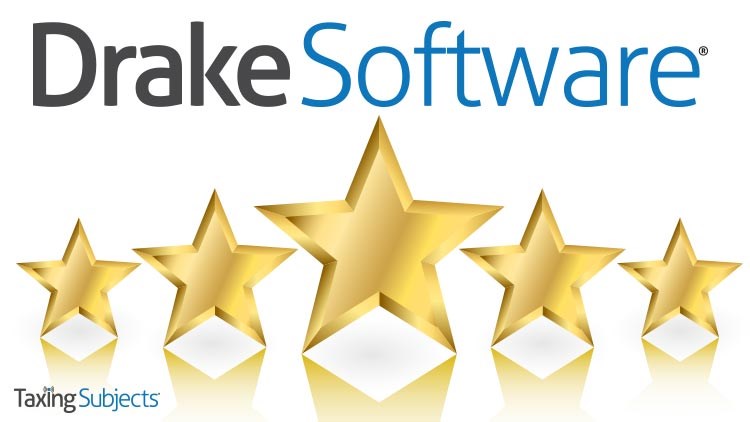
by r Hampton | Jun 25, 2019 | Tax News
When choosing tax preparation software, tax professionals weigh a number of factors: cost, features, support, word of mouth recommendations, and industry reviews. CPA Practice Advisor recently issued its annual software review for Drake Tax, awarding the Drake Software’s tax preparation package 5 out of 5 stars.
Straight away, reviewer Mary Girsch-Bock pointed out that Drake Tax has been winning the CPA Practice Advisor Readers’ Choice Awards for fifteen years straight. As a full-service tax software capable of handling “a high number of individual and business returns,” Drake Tax includes key features that can help tax professionals get through filing season. Here are a few highlighted in the review:
- DoubleCheck
- Drake Documents
- Drake Tax Planner
- Federal and state tax form support (6,000+)
- Printable Spanish-language forms (12)
- Integration and support with ancillary software
Tax professionals who are concerned about data security can use Drake’s SecureFilePro (SFP) service, which replaces email as the go-to platform for exchanging client documents and backing up files. Addressing the new mobile app for SFP, the reviewer wrote that it “[allows] clients to take photos of tax documents and securely upload them to the portal. SecureFilePro Connect also offers remote electronic signature capability, as well as the ability to accept client payments electronically.”
Successfully improving office workflow can often depend on whether the efficiency-improving applications work with your existing software. The review noted that the tax automation service GruntWorx integrates with Drake Tax. That means Drake customers can use GruntWorx to import data from scanned client documents directly into Drake Tax—eliminating manual document organization and data entry. Drake Accounting is another program that integrates with Drake Tax, letting tax professionals expand their tax preparation services to include year-round accounting.
The review closed by looking at customer support and pricing options. On the first point, Drake Software is known for providing top-tier customer support. In addition to phone and email support options, the review listed several free resources available to customers, like training videos and downloadable guides. When it comes to price, Drake has unlimited and pay-per-return packages that benefit from early-bird pricing and software bundles.
Source: 2019 Review of Drake Tax
– Story provided by TaxingSubjects.com

by r Hampton | Jun 24, 2019 | Tax News
The nation’s Taxpayer Advocate says continuing poor taxpayer service and lack of an effective use of online self-service applications are just two of the challenges facing the Internal Revenue Service. Nina Olson made the assessments in her last report to Congress as the National Taxpayer Advocate. After 18 years in the job, Olson is retiring July 31.
“I am enormously grateful for the opportunity I have had to advocate on behalf of our nation’s taxpayers,” Olson wrote. “Amazingly, despite the challenges of complying with our multi-million-word tax code, more than 150 million individual taxpayers and more than 10 million business entities do their civic duty every year by filing income tax returns with the IRS. That is an extraordinary achievement and one we should not take for granted.”
But Olson is quick to note that despite the successes of the American income tax system, there are plenty of failures that need attention. “Taxpayer service is woefully inadequate. . . . IRS audit notices are often unclear, leading some taxpayers to ‘agree’ to assessments by default – even when they don’t owe the tax. And the IRS doesn’t screen for ability to pay before it takes collection actions, thereby causing or worsening financial hardships for financially vulnerable taxpayers. Advocating for taxpayers affected by problems like these, both individually and collectively, has been and will continue to be the work of TAS (Taxpayer Advocate Service).”
Poor Taxpayer Service
Olson’s final report names poor taxpayer service as the biggest challenge facing taxpayers who have to deal with the IRS. One example was that IRS telephone assistors during the recent filing season answered just 25 percent of taxpayer calls agency-wide, and the hold times for those taxpayers who got through averaged 13 minutes.
“Federal customers . . . deserve a customer experience that compares to – or exceeds – that of leading private sector organizations,” Olson’s report states.
Two indices of that performance – the American Customer Satisfaction Index (ACSI) and the Forrester U.S. Federal Customer Experience Index – show the IRS performs badly relative to private-sector organizations and other federal agencies.
The ACSI report for 2018 ranks the Treasury Department tied for 10th out of 12 Federal Departments and says that “most [IRS] programs score . . . well below both the economy-wide national ACSI average and the federal government average.” Similarly, the 2019 Forrester report ranks the IRS 13th out of 15 federal agencies and characterizes the IRS’ customer experience score as “very poor.”
There seems to be no help in sight. The National Taxpayer Advocate’s report says the IRS isn’t taking adequate steps to correct the service shortcomings. The administration’s 2020 budget proposal requested a 5 percent increase for enforcement, but a 6.6 percent decrease for taxpayer services funding.
Olson sees this as robbing Peter to pay Paul. “There is no doubt that budget constraints have limited the IRS’s taxpayer service capacity, but the IRS should not blame Congress for a lack of taxpayer services funding when it is itself proposing to shift funding away from taxpayer services. What’s more, budget constraints can’t be used as an all-purpose excuse for mediocrity. The Taxpayer First Act directs the IRS to develop a comprehensive customer service strategy within one year. The IRS should use that requirement as an opportunity to think creatively about better ways to truly put ‘taxpayers first.’”
Best Use of Self-Service Applications
In recent years, the IRS has relied on online self-service applications as a way to address taxpayer problems without the use of a living IRS employee. But this strategy, Olson notes, only goes so far.
The National Taxpayer Advocate’s report cites survey data from Forrester Research and a separate survey recently published in the Harvard Business Review that, in combination, indicate customers who use the Internet are comfortable with self-assistance for some categories of interactions but prefer personal contact (by phone or in person) for others, particularly those that involve uncertainty and complex decision-making known to provoke anxiety.
“Applying these findings to the IRS, with its awesome investigation, audit, and collection powers,” Olson wrote, “it is clear that every interaction with the agency has the potential to be anxiety-inducing. This observation has led me to develop what I call the Taxpayer Anxiety Index as a methodology for analyzing how the IRS should structure its interactions with the taxpayer. Simply put, as the anxiety-inducing capacity of a given interaction increases, so should the taxpayer’s access to person-to-person interaction.”
Olson’s annual report contained “roadmaps” that identify the stages of a taxpayer’s process through the tax system. Using those roadmaps, the report identifies where a taxpayer’s anxiety increases – and human intervention is warranted.
“For example, in our Return Processing Roadmap, if a taxpayer’s refund return gets bogged down in Identity Theft processes or in the pre-refund wage verification program, these delays cause anxiety,” the report states. “Where the taxpayer’s refund gets stopped for multiple delays, anxiety skyrockets.”
The TAS urges the IRS to use a “Taxpayer Anxiety Index” concept to determine where human contact is needed in the process and to continue to provide personal service in those circumstances.
The Filing Season in Review
The Taxpayer Advocate’s report also took a look at the 2019 filing season. Overall, the report found, it went smoothly, with the IRS receiving some 137 million individual income tax returns and issuing about 96 million refunds. The average refund totaled $2,725. About 92 percent of the individual returns were filed electronically, and some 87 percent of taxpayers who got refunds chose to receive them by direct deposit. These statistics were comparable to those from the previous year.
The numbers weren’t so rosy, though, for taxpayers who needed assistance from the IRS. Olson’s report found that: “The IRS’s benchmark “Level of Service” (LOS) on its Accounts Management telephone lines dropped from 80 percent during the 2018 filing season to 67 percent this year. Time spent on hold on those lines rose from an average of 5.1 minutes to 9.0 minutes.”
The report conceded that part of the decline was due to the partial government shutdown early in the filing season. And other areas of the IRS had even bigger problems.
For taxpayers calling the compliance telephone lines (which are separate from the Accounts Management lines), performance was worse. The LOS on the various Automated Collection System lines was 33 percent, and the average hold time was 41 minutes.
More to Come
The National Taxpayer Advocate will be releasing two additional volumes of the report next month. The first will contain the IRS’s general responses to each of the administrative recommendations the Advocate proposed in her 2018 Annual Report to Congress as well as its specific response to each recommendation. The volume will also contain TAS’ analysis of the IRS’ responses and, in some cases, will detail TAS’ disagreement with the IRS’ position.
The second additional volume will contain a comprehensive assessment of the Earned Income Tax Credit (EITC) and will make recommendations designed to increase the participation rate of eligible taxpayers and reduce overclaims by ineligible taxpayers.
– Story provided by TaxingSubjects.com

by r Hampton | Jun 23, 2019 | Tax News
Choosing software for the upcoming filing season is only one part of the equation. Knowing how to use it is the difference between success and failure when you’re in the middle of the January-to-April crunch. Back in April, we discussed CPE opportunities with members of the Drake Education team, and this episode of the Taxing Subjects Podcast looks at Drake Accounting classes.
Drake Accounting Team Lead Lori Correa and Drake Accounting Instructor Jenny Brown explain what attendees can expect to learn, how long the sessions are, and more. If you’re interested in signing up for a Drake Software Education course, visit Training.DrakeSoftware.com.
– Story provided by TaxingSubjects.com

by r Hampton | Jun 21, 2019 | Tax News
tax tips | June 21, 2019 | By Susannah McQuitty

Kickstarter, GoFundMe, Indie GoGo—whichever website you use, crowdfunding has become incredibly popular. But do you have to pay taxes on the money you make through crowdfunding websites?
You might have to pay taxes on your campaign, but in some cases, you might not. So how do you tell the difference?
Do you have to pay taxes on the money that backers send?
The most foolproof way to tell whether your crowdfunded money is taxable is to simply ask, “Why are people sending money?”
If your contributors are giving money as a donation and don’t expect to get anything from you as a reward, their contributions are considered a gift and aren’t taxable—so you don’t have to pay taxes on a crowdfunded campaign if there is no rewards tier.
Do your backers expect something in return?
However, you do owe taxes on at least part of the contributions if your backers expected something in return. Rewards like t-shirts, pre-ordered products, or other things with monetary value are taxable for the reward tier’s minimum amount.
Say you promise a t-shirt if a backer sends $30. You will have to pay tax on the $30, since the contributor gave you money and you gave a product in return—but you only have to pay tax on the $30, not any extra they may donate for that reward tier. This is because contributions greater than the minimum amount for the product is totally up to the backer. So, if a contributor sent $50, you’ll pay taxes on the $30 but not the remaining $20.

Are contributors buying stock or equity in your startup?
If your contributors are giving money to buy equity in your startup, they are making an investment in your company and not actually paying you as an individual. So, you don’t have to pay taxes on a crowdfunded campaign if contributors are buying stock or equity in your startup.
Can you get tax deductions for backing a crowdfunded campaign?
Most crowdfunded campaigns are for personal projects or needs, but some are run by certified charities to raise money for their organizations. If you make donations to a qualified 501(c)(3) charitable organization, you can actually get a tax deduction for your contributions!
Not sure if the campaign you backed is run by a 501(c)(3)? Check out the IRS Tax Exempt Organization Search to see if it makes the list. And, of course, remember that you can only use this deduction if you itemize deductions on your taxes—so you’ll need to contribute a lot of money or have plenty of other deductions to make itemizing worth it. (Taking the standard deduction is the easiest way, and often saves you more money.)
Let us know in the comments below if you have any more questions about backers, contributions, and tax breaks for your crowdfunded campaign!
– Story provided by 1040.com

by r Hampton | Jun 14, 2019 | Tax News
tax breaks | June 14, 2019 | By Susannah McQuitty

If you’re in the medical field, finding tax breaks may not be as difficult as you think. While some of you should use a tax professional because your financial situation is more complicated, others may find that their taxes are pretty straightforward. Let’s review some of the core concepts that impact your tax situation and how to pull together some tax relief.
To keep things simple, we’re going to refer to nurses below, but this content largely applies to physician’s assistants (PAs) as well.
Are you an employee or an independent contractor?
Some nurses are considered employees of the healthcare institution where they work, while others are actually hired as independent contractors. It may not seem like a big deal, but your taxes will be calculated differently for each—especially after the recent tax reform laws.
Employees will fill out a W-4 upon being hired to establish how much tax should be withheld by their employer each pay period before they receive their wages in the form of a check or direct deposit. Those withholdings are sent to the federal government (and state, as applicable). At tax time, employees will receive a W-2 to help file their taxes.
Independent contractors, on the other hand, will fill out a W-9 for each practice (institution, clinic, hospital, etc.) they perform services for. This allows each practice to properly report information to the IRS and send a 1099-MISC to the contractor at tax time. Contractors typically bill or invoice the practice for completed work, and once they’ve been paid, make quarterly estimated tax payments to the federal government (and state, if applicable).
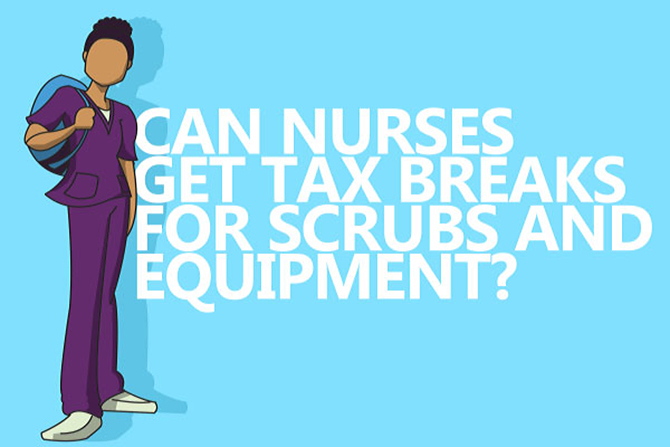
Can nurses get tax breaks for scrubs and equipment?
If you’ve been in the nursing business since before 2017, you remember the days when necessary work items like uniforms and equipment could save even W-2 employees money on their taxes (as long as your employer didn’t reimburse you for those expenses).
All of that’s changed, however. See, the Tax Cuts and Jobs Act of 2017 (TCJA) boosted the standard deduction for everyone—instant tax savings automatically for many taxpayers. But in order to raise the standard deduction, the TCJA got rid of some other tax breaks.
Starting in tax year 2018, nurses who are employees can no longer deduct their work-related expenses on Schedule A, even if their employer doesn’t reimburse the expense. This deduction for unreimbursed employee expenses was eliminated as part of the TCJA. (Now, some states actually still let you deduct out-of-pocket expenses from your state tax return, so check out your state’s Department of Revenue site to see where you fall.)
What about tax breaks for nurses who are independent contractors?
Independent contractors can deduct their work-related expenses, which are reported on Schedule C, not Schedule A (for itemized deductions). These expenses might include home office equipment, gas for a personal vehicle, computers, phone bills, and so on. Other big items include nursing-specific expenses, like:
- Malpractice/liability insurance
- Medical equipment
- Medical billing service
To deduct these expenses from income, you’ll need to keep good records (and it may be worth setting up work-specific credit and debit cards to maintain separate “business” records).
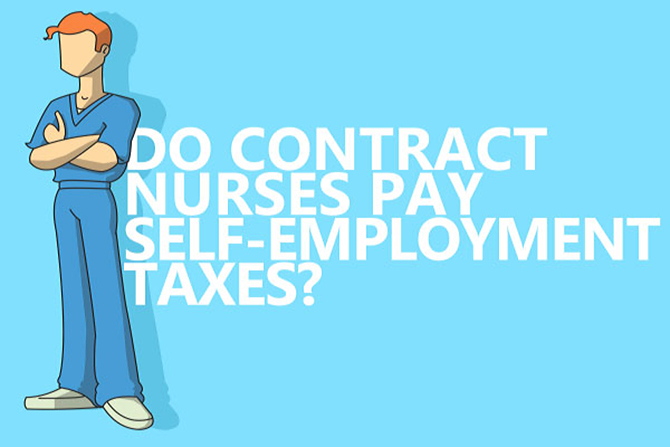
Self-employment taxes for freelance nurses
A quick note for independent contractors: You are technically considered self-employed, which means the self-employment (SE) tax applies to any income you make as a nurse.
SE tax is the amount you pay for Social Security and Medicare taxes, and since you’re both the employee and employer, you’ll be paying almost twice what you’d normally pay if you were a regular employee. That adds up quickly, but don’t lose heart—you can deduct half of your SE taxes on your federal tax return, which brings your total back down a bit.
Tax breaks for ongoing nursing education
Both employees and independent contractors in the nursing field can get tax breaks for continuing education. The Lifetime Learning Credit is geared toward any taxpayers pursuing education after the first four years of an undergraduate degree.
Usually employees have financial help from their employer, but any tuition or fees that aren’t reimbursed could qualify you for the Lifetime Learning Credit. Since independent contractors won’t have reimbursements from an employer, they are more likely to be able to claim the full Lifetime Learning Credit.
What sort of work-related records should nurses gather?
If you’re an employee, grab your W-2 and don’t worry about saving receipts for expenses throughout the year. Instead, look into maxing out your contributions to an employer-benefit retirement plan such as a 401(k), 403(b) investing benefits, or fringe-benefit “Flex Accounts” that allow the nurse to purchase fitness, daycare and commuting services with pre-tax dollars. You could also contribute to a personal IRA (Individual Retirement Account) or HSA (Health Savings Account) if eligible, since contributions can often reduce taxable income.
If you’re an independent contractor, keep careful and exhaustive records of all your business-related expenses throughout the year (including uniforms, travel, equipment, licensing fees, etc.) so you can deduct them from your income on Schedule C.
Filing your taxes
So what does the actual tax-filing process actually look like for nurses? Honestly, not that much different from anyone else. Sure, you’ll have different types of records to gather before sitting down to do your taxes, but you can file online just as well as the next person.
Once you’ve set aside your records throughout the year, the hardest part is over. Nurses who are employees will file like other employees, independent contractors will file like other freelancers and small-business owners, and anyone can file with 1040.com—the smart and simple way!
– Story provided by 1040.com


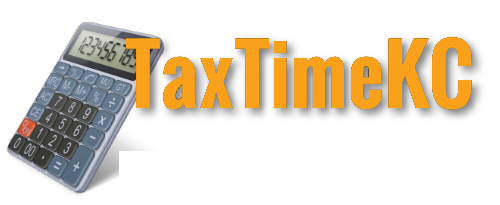

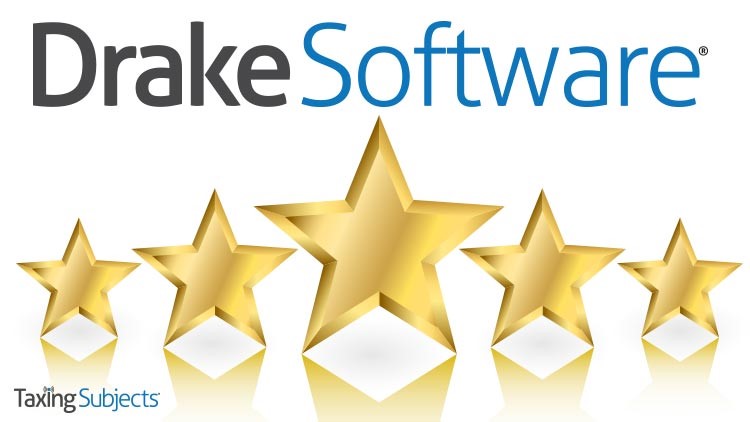












 TAXTIMEKC
TAXTIMEKC